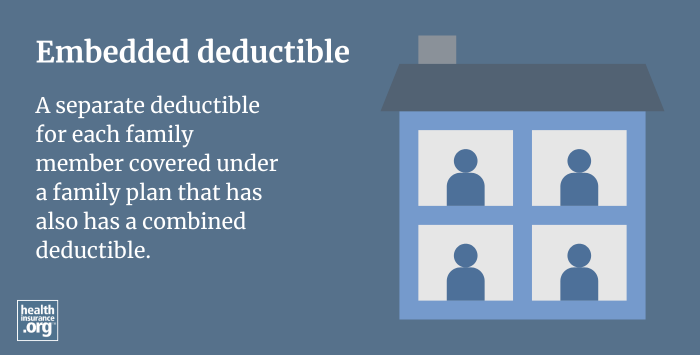
What is an embedded deductible?
In a health plan with an embedded deductible, no single individual on a family plan will have to pay a deductible higher than the individual deductible amount. As an example, consider a plan with a $4,000 individual deductible and an $8,000 family deductible:
If the plan uses embedded deductibles, a single member of the family would have met the deductible once he or she had paid $4,000. If no other members of the family needed treatment, the $8,000 family deductible would be irrelevant, and after-deductible benefits would kick in for the family member who had already met the $4,000 deductible. (If two or more members of the family needed treatment, the $8,000 family deductible would apply.)
Note that this not quite the same thing as an embedded out-of-pocket maximum (OOMP). An embedded OOPM is similar, but it includes the full OOPM (including copays, coinsurance, and deductible), rather than just the deductible. Starting in 2016, all non-grandfathered health plans must have embedded OOPMs that cannot exceed the individual OOPM for that year.
Read more about embedded deductibles.
